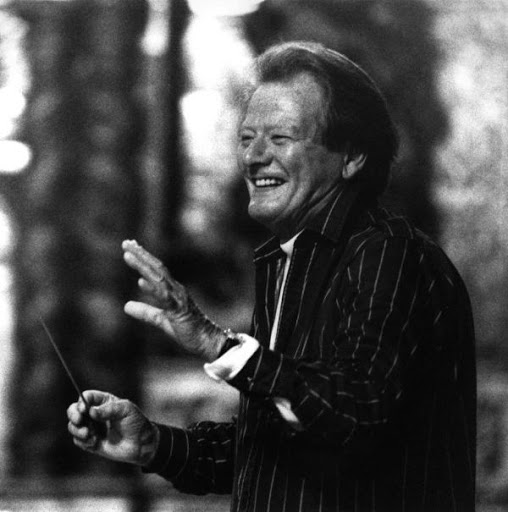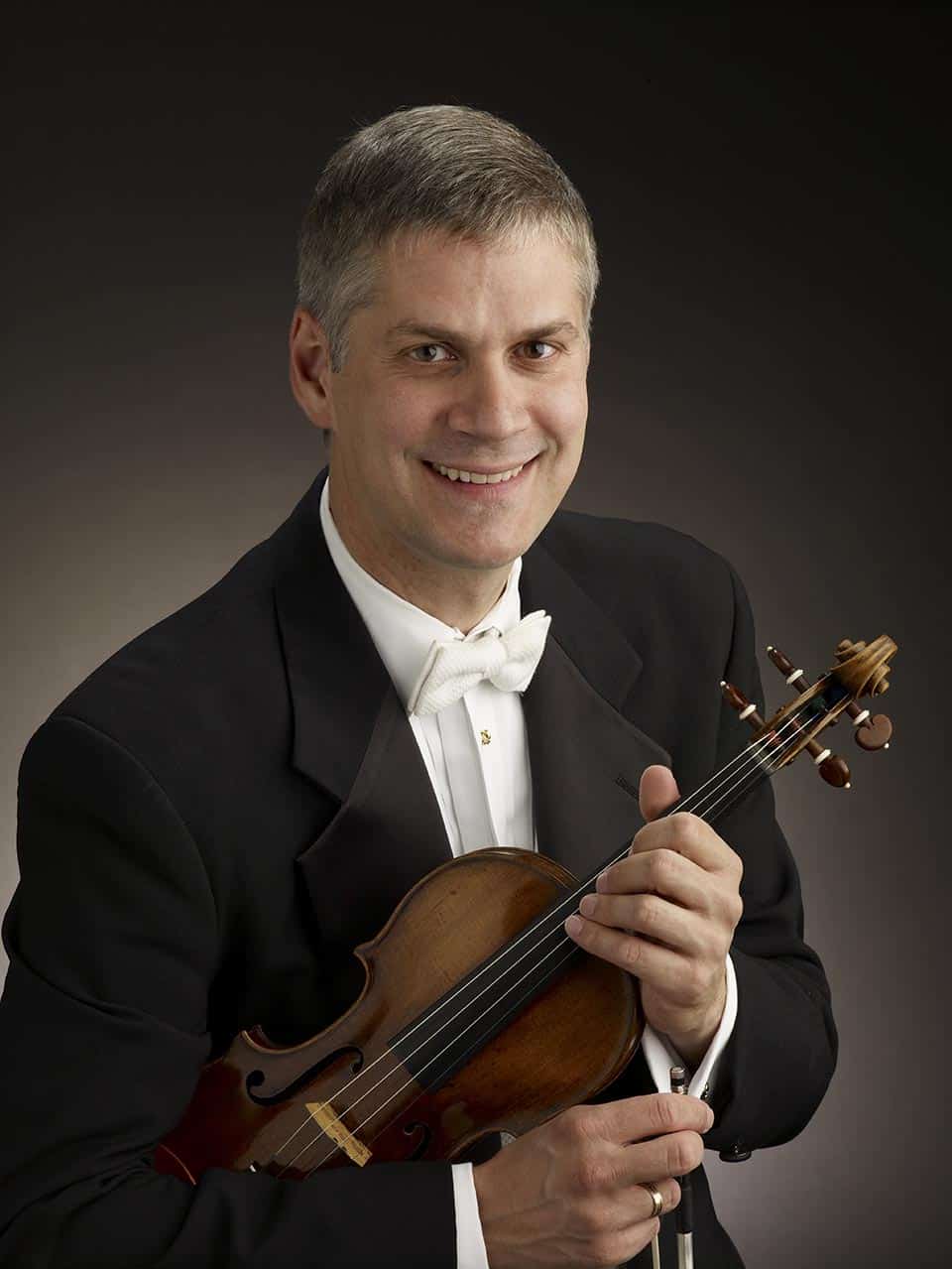Beethoven says: May the 4th be with you
mainWelcome to the 50th work in the Slipped Disc/Idagio Beethoven Edition
Fourth Symphony, opus 60 (1808)
Trapped between the enormous statements of the Eroica and the Fifth Symphony, the fourth symphony was always appreciated most by composers. Berlioz regarded it as the work of an angel and Mahler mimics its hesitant introduction in the opening to his first symphony. You don’t need to know much about music – or Beethoven – to understand why the work failed to be understood by audiences, then or now.
Although written at the same time as the 5th symphony, the fourth is neither heroic, nor is it romantic, ethereal or political. A German analyst complained that it lacked ‘higher meaning’ and one early-20th century English critic placed it as ‘not in the main line of Beethoven’s spiritual development’, a statement that is at once self-evident and yet so simplistic as to demand instant demolition.
To understand the symphony, we have to take it at face value: this is what Beethoven was writing in breaks between composing movements of the 5th symphony. In other words it is, by self-definition, his not-the-fifth symphony. Once that truth is grasped, all others fall into place. The fourth symphony is every bit as radical as its companions, springing a counter-intuitive shock by defying the heroic and romantic modes of the time. It is deliberately quiet for two movements and consciously introspective for the rest. It carries us forward beyond Beethoven to the fourth symphony of Robert Schumann, another composer who ignored what the world expected of him, and beyond that to Mahler and Schoenberg. In the hands of a gifted interpreter, Beethoven’s fourth symphony is an overwhelming experience, equal to either of ts neighbours. Leonard Bernstein called it ‘the biggest surprise package Beethoven has ever handed us.’
To find an entry point I’d begin with the Russian school of Beethoven interpretation, always focussed less on beauty than structure and momentum. The enigmatic Yevgeny Mravinsky gave a gripping performance with the Leningrad Philharmonic in June 1955, an account that delineates that shape of things to come in the opening page and holds fast to its purpose for the next half-hour. If Mravinsky has a fault aside from a certain coolness, it is his inflexibility. Here his rigidity delivers a Beethoven unperceived by noisier conductors, a composer who walks alone while the world about him trembles on the brink of war and chaos. Whatever Mravinsky and his musicians went through in the siege of Leningrad is imbued in this epic realisation of an elusive masterpiece.
Among Mravinsky admirers, the Latvian Mariss Jansons (2012) offers a gentler view of Beethoven, more rounded and approachable, yet tinged by an inner compass that points resolutely ahead, to a better world. The Bavarian Radio Symphony Orchestra, on top form in a Tokyo concert hall, adds luxurious sheen to the proceedings.
The Czech exile Rafael Kubelik, offered an opportunity to record a 1970s Beethoven cycle for Deutsche Grammophon, chose to perform one symphony with each of his favourite orchestras. For the fourth symphony, he settled on the Israel Philharmonic, still composed at the time mostly of Hitler exiles from Germany, Austria and his own homeland. The fourth symphony served as a meeting point for waywayrd souls, waifs and strays. Kubelik invested the work with a yearning for paradise lost, driving it forward to some roseate destination. The Israel Phil was not an ensemble of absolute world class, but here it sounds like one.
Most discussions of the fourth symphony begin (and end) with Wilhelm Furtwängler. The fourth was one of the old waverer’s favourite works and he never failed to make it reflect the circumstances of the moment. His June 1943 Berlin broadcast, in the midts of war and death, is dark and dread-filled, punctuated by audience coughs, bangs and nervousness. Over these disturbances, Furtwängler throws a line of beauty and salvation. We can do better than this, the music seems to say, redemption is in our hands. This is one of my most-listened Beethoven records. Post-War Furtwängler repeats with the Vienna Philharmonic are more serene, less satisfying.
Carlos Kleiber‘s 1982 Munich performance has a magical aura and unmatchable tension. You may be swept away. Myself, while listening to it, I think: you had to be there. This is not a repeatable occasion, enjoyable as it remains. Herbert von Karajan‘s most effective Beethoven 4 is the Berlin one from 1963. Abbado, Rattle, Chailly and Ivan Fischer are all worth investigating. The veteran Herbert Blomstedt (2016) is well worth a detour to Tanglewood for sheer elegance and timeless mastery.
Leonard Bernstein spoke with real authority in this symphony, which American orchestras played more when he was growing up than their European colleagues did. There’s a lightness to his touch and a smoothness of line in the second slow movement that makes his subsequent speeds appealing and coherent. The New York Philharmonic exercise unaccustomed discipline and surgical precision.
Christopher Hogwood led the period-instrument recordings in 1987, but I can’t help finding his reading fidgety and dry when heard beside Roger Norrington, Nikolaus Harnoncurt or Frans Brüggen. If it’s excitement you’re after, John Eliot Gardiner and his Orchestre Révolutionnaire et Romantique will appease raw cravings. It’s fast and furious in the latter half, but is it Beethoven?
When I contemplate the fourth symphony, my ideal recording is Neville Marriner‘s with the Academy of St Martin in the Fields. Marriner was a pioneer of period practice who rejected growly basses and valveless horns in favour of an agreeable sound ambience. As a boy of 16 in 1939, Marriner was called into the London Symphony Orchestra to deputise for fighting men. Conscripted at 18, he was seriously wounded and out of action for several months, in the course of which he studied period performance with his ward neighbour, Thurston Dart. Over the next 15 years in London orchestras, he played for Toscanini, Furtwängler, Stokowski, George Szell and Pierre Monteux. Observing them closely from his seat as leader of the second violins, Neville Marriner learned how to get the best out of a group of musicians. While he lacked the numinous aura of a grand maestro, he could get outstanding results from any set of players, and on very little rehearsal.
His 1976 Philips recording of Beethoven’s fourth symphony is Neville Marriner at his peak – sensitive, supple, sleek and sometimes swift while taut in line and length. The finale is a masterclass in holding the attention. Marriner took a lot of flak from early-music purists for being too moderate, and from grand-maestro adulators for not being flash enough, but here he’s as good as it gets, if not better. His core values were founded on a humility that came from spending all those years at the wrong end of the stick.







Thank you for your comments on my late great friend Neville Marriner. He taught me how Mozart is supposed to be played during his first season conducting the Los Angeles Chamber Orchestra in 1968 and his lessons are with me still.
For me, it’s a toss-up between the 1963 Karajan and the 1975 Kubelik.
I agree the Israel PO sounds truly first rate under Kubelik. The playing itself is rhythmically alert and keenly articulated, and the performance is rendered even more sonically satisfying by the recording – made (fortunately) in Munich’s Herkulessaal rather than the dry Mann Auditorium in Tel Aviv, the orchestra’s home. (It is the only symphony in Kubelik’s distinguished Beethoven cycle not recorded in the chosen orchestra’s home city.)
I agree completely, MezzoLover – those are my first choices as well.
And I’ll add Toscanini/BBC Sym and Szell/Cleveland 1963.
Furtwangler never truly understood this work. Norman opines that “the fourth was one of the old waverer’s favourite works”. In terms of performance frequency, this might very well be so, but I believe that’s because he never felt he could get it right, and kept trying again and again, beating his head against a musical wall he could never break down. Norman wrote it, not I: “the old waverer”. That’s what WF’s Fourths sound like.
What a delight to see praise of Marriner. I always thought he was vastly underrated because he was so understated. But I find everything I hear him conduct balanced, sincere and satisfying.
Yes! Marriner has always been my yardstick in this work; and his performance of the companion piece, the Grosse Fuge, is my standard for an orchestral interpretation.
I also enjoy his recording of the two C-Major symphonies by Carl Maria von Weber. The First was composed in 1806-1807, the exact same time when Beethoven wrote his Fourth. Another interesting similarity between the two symphonies is in the orchestration. Weber did not include clarinet in his score, probably as a reflection of the resources that were at his disposal in Württemberg at the time.
This was always among my favourite of Beethoven’s symphonies.I cannot understand why it is not more popular. The others are numbers 3, 5 and 7. I must be among the smallest of minorities in not loving numbers 6 and 9 as much as one probably should. This is within the context that my favourite symphonist of all time is Brahms followed by Bruckner and Sibelius (the later is particularly close to my heart as he was fond of drink. He could no longer compose after becoming a teetotaller.).
Furtwängler’s conducting of the Fourth’s Adagio was one of his consistent strengths in Beethoven, along with the Marcia Funebre of the Eroica etc. In contrast, for me his renditions of the slow movement of the Fifth drag along — but then, the tempo for the Fifth is marked ‘andante’. It is WF’s ability to phrase, in sustained concentration, a long-arched melodic line.
Bruno Walter had similar qualities in his Columbia SO recording of the Fourth. However, Walter brings a mellow joyousness to the outer movements of the Fourth that largely eluded WF. CBS also gave Walter resonant, quality late-1950s recording quality, not the Crappy Bassless Sound that seemed the 1960’s CBS standard that Szell and CBS cooked up for the Cleveland orchestra — it is the relatively uningratiating sound that for me accentuates Szell’s hard driving tempi in some of his Cleveland Beethoven recordings.
As for Carlos Kleiber, seeing him perform in video for the Fourth, with the Concertgebouw, is so much more illuminating than audio-only. He really does seem to mime, at times, the inner meanings of the Fourth. But can anyone here tell me what he meant in the rehearsal footage for the Adagio, about the strings in the dum-DUM, dum-DUM accompaniment, saying ‘Marie, Marie’, instead of ‘Therese, Therese’ [ or vice versa ]?
His suggestion makes sense to me because, if we think Marie, that conveys the appropriate articulation and character. The soft “s” in Therese doesn’t give the same ending to the second note. Marie ends up, and Therese ends down, in a sense.
It’s also a jokey reference to the Marschallin’s name, as in the final trio “Marie Therese hab mir’s gelobt” etc.
Could you add Mackerras’s Hyperion version, Antonini’s Kammerorchester Basel version, Shui and the Copenhagen Philharmonic and even Adam Fischer’s version to the mix? I like the contrasts and the sense of play among the winds, and I am quite fond of the winsome way that Mackerras and Antonini handle the slow movement. They strike a good balance between the dotted rhythm and the long drawn-out melody.
So, (Marriner) “studied PERIOD PERFORMANCE with… Thurston Dart” did he? Seriously, is this merely naïve, tongue-in-cheek, or maybe a deliberate wind-up?
You write, Marriner’s “core values were founded on a humility that came from spending all those years at the wrong end of the stick.” Some of us orchestral musicians think we are actually on the right side of the stick. (Or, on the left side, since the bow is often called a stick, too.)
Marriner had better ears and judgment than most conductors precisely because of his orchestral playing experience. How I wish other conductors had even a tiny bit of that.
Yes Player, I agree with you about Sir Neville’s experience as an orchestral musician having provided the platform for a truly informed understanding of the music. Sir Henry Wood was also of the opinion that conductors ought to rise from the ranks of string players in an orchestra, since that is after all where one really learns the music.
Furtwängler, Klemperer, Kleiber, Stokowski,von Karajan, Boulez, Celibidache…..
Outstanding conductors who had no experience as string players.
Another ‘oldie’ worth discovering is the Josef Krips/Decca mono. The critic Robert Matthew Walker used to say the Furtwängler/HMV was wondrous.
The one in the Blomstedt Accentus box (Leipzig) is of predictably high quality. Agree with NL re the best of the Karajans although a 1985 London concert perf. is on Testament – Straussians would want this for the coupled Heldenleben!
Once again, don’t deny yourself Leibowitz/RPO….it’s
stunning!
my frame of reference appears to be older than anyone else’s but where’s bruno walter?
The fourth is my favorite Beethoven symphony.
I’d give high marks to Pierre Monteux’s recording with the London Symphony and also like Bruno Walter’s stereo recording.
This is one of the best in your series and it has made me want very much to revisit or discover some of these. They are not arcane choices, but Toscanini with the BBCSO and Karajan in 1962(?) are worth seeking out.
The Szell/CO 1963 recording, especially the playing of the Principal winds Marc Lifschey, Robert Marcellus, Maurice Sharp and George Goslee, is superb. The dynamic range and control of Principal tympanist Cloyd Duff is also notable. The performance is very reminiscent of Szell’s approach to late Haydn.
Beecham excelled in the Fourth,as he did in all the even-numbered symphonies, especially the Second.
But it’s Furtwaengler’s post-war EMI studio version with the VPO that I want. If you listen closely, you hear the tip of his baton strike the music-desk ahead of the beat just before the forte chord in the finale. His country walk with ticking clock makes an extraordinary Andante, right down to the final blaze of horns. His wind-up into the first movement’s Allegro really rocks; I can wear out shoes listening to it. The whole work glows with geniality and good humor.
Reading Norman’s items on Beethoven are a daily joy, especially in these strange times.
So I hate to nitpick. I must question, however, Norman’s assessment that, “Whatever Mravinsky and his musicians went through in the siege of Leningrad is imbued in this epic realisation of an elusive masterpiece.”
According to Brian Moynahan’s “Leningrad: Siege and Symphony”, the Leningrad Philharmonic and its conductor were evacuated to Siberia shortly before the siege began. It was the Radio Orchestra and conductor Karl Eliasberg who stayed behind in the besieged city.
That said, on Norman’s recommendation, I look forward to hearing Mravinsky’s performance of Beethoven’s fourth.
The special thing about the Fourth is that it’s Beethoven enjoying and indulging in the sonorities of the orchestra. The music is the message.
Agree with everything re: Neville Marriner…
I had the great opportunity to record Dvorak 9 with him for radio….
“Tympani….might we have harder sticks…? What I’m hearing suggests a golf ball hitting a dead sheep….”
Mr Lebrecht, could you write a post on the qualities you look for when you want to hear Beethoven performances? Many readers would find it helpful if you stated your standards when you listen to his music.
What vinyl editions of the Furtwangler 4th would you recommend for best transfers?
Hi Jonathan,
I have this recording on an Odeon/EMI LP, SME 91 412. The sound is beautiful and the pressing is excellent.
I wish you luck in finding it!
I first got to know this symphony through an LP of Toscanini’s fiery NBC performance. It still holds up although the recording of course leaves a lot to be desired. Among more modern recordings the Karajan 63 (but it is 57 years old – help!) is pretty unbeatable but Kubelik deserves a mention as well
Smesh Nair above put his finger on CBS “crappy bassless sound” for Szell’s 1960s LPs that bothers me, makes them top-heavy as toscanini but also under-strength, unlike Szell’s work in Vienna, Berlin, Prague, or Amsterdam.
One attraction of European recorded sound was its rich bass, if not overdone at the expense of the treble, where Walter and Furtwaengler built the sound from the bottom up.
Thus Bruno Walter, whose Columbia Symphony Orchestra sometimes had only four basses that CBS enhanced
electronically.
Only four double basses in the LA-based ( no pun intended ) Columbia orchestra? Surely not at Walter’s insistence! Was it due to illness, or the bean counters saving $?
The bean counters, Ramesh Nair, I suspect. A reviewer who had reason o know mentioned it. Walter was in uncertain health at the time; the sessions were in a large semi-public space near his home.
I saw him conduct Mozart and Bruckner in San Francisco around that time, with Wagner tubas imported from Los Angeles, but had no chance to ask him. I was glad to read yur comments about CBS’s Cleveland Orchestra sonority, which always bothered me.
Thank you Norman for the great idea of giving inputs on different performances of the same opus number. I really enjoy reading your comments and listening to the different records.
Since the 4th is my favourite Beethoven symphony and it’s time to stay home quarantined, I had enough time to take an experiment that I was looking for a long time.
Basically, I don’t agree very much with Norman comments on Gardiner executions; I can understand his performances might sound misleading at first, but he basically draw a new line on the Beethoven interpretation in the 90s, as probably did Furtwangler in the 40s.
Gardiner tempos are probably more correct than Furtwangler’s, and with this idea in mind I did my research.
Score in hand, I did check the tempos (which are Beethoven marks) and I compared all the different records that you recommend.
This can be a strange experiment to some, but to me it really gives the idea on how different performers approach the piece. I was used to do the same when I was a music student; my teacher always compared different records, marking the tempos and then deciding which approach was better – I learnt to do the same.
Furtwangler tempos are way too slow; all the other conductors are in an average tempo area – Furtwangler is by far the slowest. Giulini to me is a similar conductor (and in fact, although I’m Italian, I don’t like him too much).
Furtwangler is really too slow for me to take. Many times he just doesn’t respect the repeats and he goes ahead.
I thought it was because of the war recordings – but looking at the WPO record he’s generally not far from what he already recorded in the 40s.
If we just take the I tempo of the symphony,
the Adagio should be a 66 – Furtwangler does a 42 in war times and 55 with WPO. Bernstein is exactly 66, Gardiner is only 58. –
looking at the Allegro vivace Beethoven marks 80 – Furtwangler 70 in war times (62 with WPO) – Gardiner is 76 not far from Abbado which is 75 (in 1999 with BPO).
One conductor that surprised me with tempos is Toscanini – he is very much close to Beethoven indications, same as Bernstein and Abbado with BPO. Toscanini sometimes is even faster than Gardiner.
Abbado is actually my favorite conductor and I checked both the WPO and BPO records – the BPO records are faster than the previous records Abbado made with the WPO.
Probably the line that Gardiner draw was then followed by many others.
I agree with Norman though, that Gardiner execution is not the best in terms of interpretation. Abbado is much more refined, although Jansons in my opinion really knows how to lead the orchestra.
Kleiber usually leaves me without words – in this record he doesn’t really catch my ears, I’m more attracted by Bernstein for sure.
Marriner is really a nice discovery, very well balanced, a great orchestra and a very good conductor. I would put a parallel with Blomstedt; his interpretation is very elegant and extremely refined.
W Beethoven!
Good, thoughtful comments, Matteo. I enjoyed and found them thught-provoking, although we do not agree about Furetwaengler. Safe quarantine to you, and a whole return to life as we knew it before this.
At brisker empi Ienjoy inman and the Tonhalle. I’m grateful no0one mentions Ansermet, but neither can I agree as to Krips or Leibowitz.
Furtwaengler/VPO generate much kinetic energy and even relative speed in the finale,don’tyou think? And there’s no mistaking the accents.
to anyone interested, today I found on youtube a very nice interview with Abbado talking about Beethoven:
https://www.youtube.com/watch?v=lt44ieYpxwI&list=LLxsI8SBEozn4f6q3YEt_ZiA&index=2&t=784s
Jumping to the 5th minute, he starts to talk about tempi… the tempi relations between one movement and other, or between the different symphonies.
To me this is enlightening!